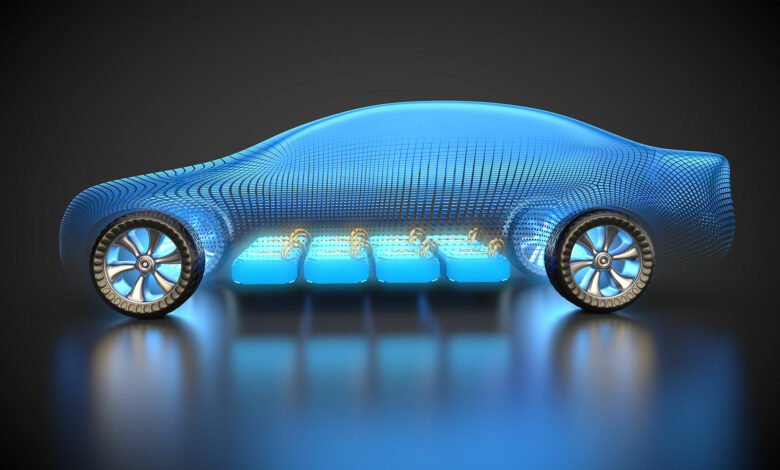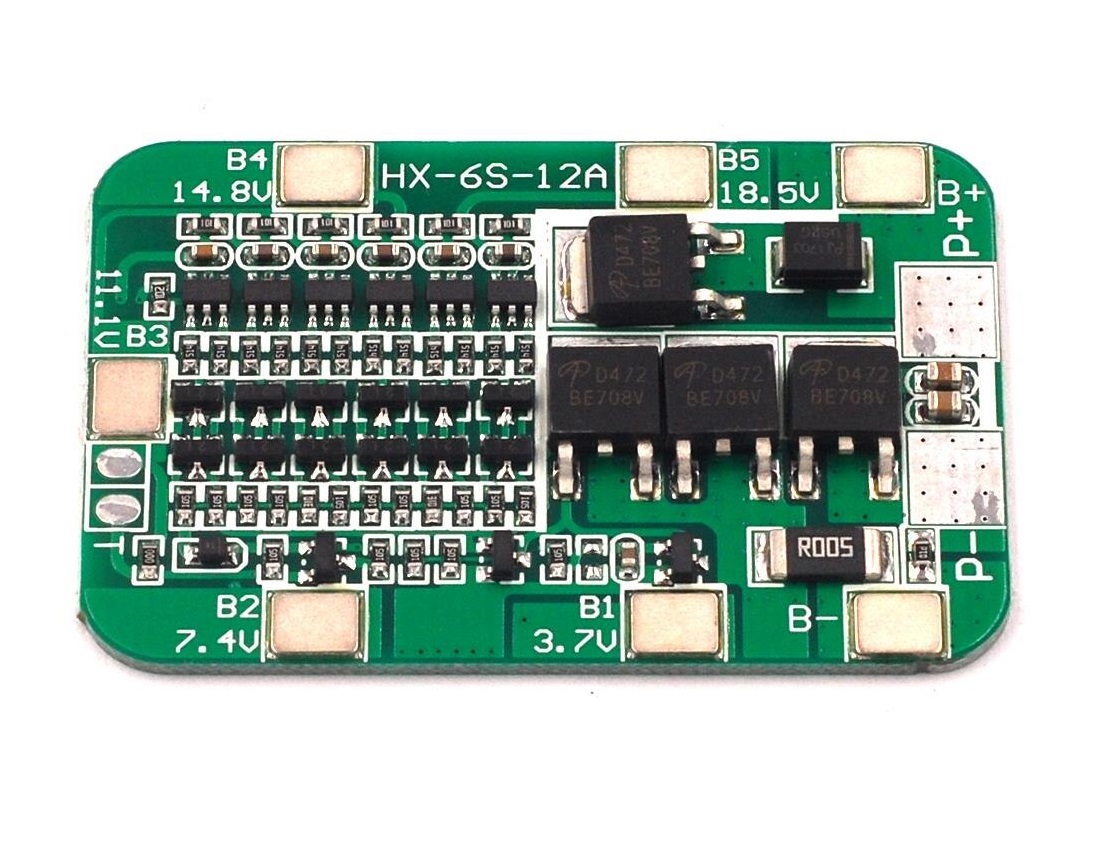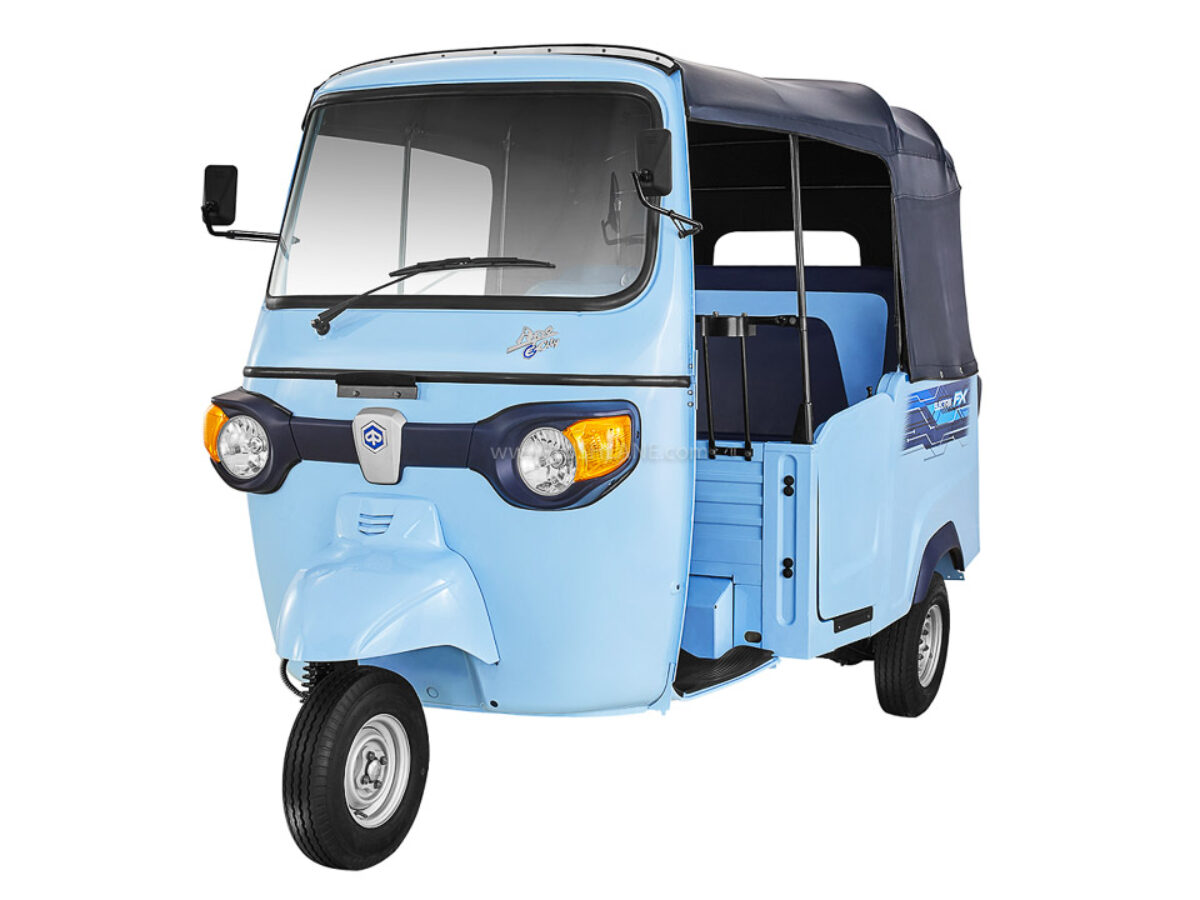Electrified car batteries: switch them or not?

Electrified car batteries: switch them or not?
This is what India’s finance minister said in her Budget speech: The government will set up a battery-swapping system with interoperability standards to solve the country’s electric car range anxiety.
It’s called battery swapping when you switch out a battery that’s run out with one that’s fully charged. Indian EVs have been looking for this kind of thing.
Is it possible to make people more likely to use green transportation in the country?
Gig and shared economies are driving the trend of changing batteries, so it’s reasonable to think that this is a good idea for all types of electric cars. You don’t need a lot of things to use it. Also, and maybe most important, it moves quickly. This bill was passed to solve the problem of not having enough EV charging infrastructure in the country. Furthermore, it costs less to exchange than to buy a two-wheeler that runs on gas.
How big can it become?
As of now, it’s possible to get some ideas from the three-wheeled market.
Making the world a better place with three-wheeled cars
In 2007, a company called Better Place came up with switching batteries. Many people in Silicon Valley thought that Better Place’s automated stations, where robots quickly replaced worn-out batteries with new ones that were fully charged, would change the world, but they were wrong. Even though the company had a bright future with its smart-swapping technology, it broke and closed down in 2013. This is what Fast Company thinks: Better Place is the most spectacularly failed tech start-up of the 21st century.
Better Place may have been a little too ambitious at the time, and they may not have been able to change the batteries in cars. Even in China, where only 6% to 8% of two- and three-wheeled vehicles in fleet operations switch their batteries, the idea has worked. When there are outlets every 1 to 2 kilometres in densely populated areas, like in a city, it works well.

In India, three-wheelers are leading the way for electric vehicles. This fiscal year, 45 per cent of all new three-wheelers were electric (147,000 out of the 326,000 cars). Before the epidemic, electric three-wheelers were becoming more and more popular because they were less expensive than other vehicles. In comparison, only 2% of two-wheelers and less than 1% of cars in FY22 year-to-date have been electric.
A company that makes electric vehicles for last-mile transportation, Omega Seiki Mobility, says that battery swapping in three-wheelers could account for 40% to 50% of new three-wheeler sales. Omega Seiki has worked with Sun Mobility for more than two months to provide the battery switching solution for 20% of recent three-wheeler sales at Omega Seiki.
To save money, you can switch from a set battery to one that can be changed. This is because the battery in the new battery is more minor. Another thing to note: A fixed battery will take five to six hours to charge. On the other hand, exchange changes this because the station does the charging. Replacement of a storm that has run out takes about 5-15 minutes for the end-user.
Auto rickshaws are used to move people around on predetermined or almost predetermined routes. Many are also used for small-scale e-commerce deliveries in a 25-kilometre radius. So, they can go a shorter distance and come back to the gas station.
If you use a regular wall outlet, the lithium-ion battery that comes with your phone takes five to six hours to charge when it’s plugged into it. An Indian nanotechnology company called Log9 Materials has developed a DC charging station that can charge a graphene battery in 40 minutes. Finally, Omega Seiki uses Sun Mobility’s battery-charging service to ensure that its batteries are always charged.
Sun Mobility and Battery Smart are two companies that specialise in battery swapping. They work with a lot of different companies. Battery Smart is primarily for people who own cars. Pulkit Khurana, the network’s co-founder, says that clients like its density. He says that out of the total 200 exchange stations, 175 are in the NCR.
Battery Smart has about 3,000 three-wheeled vehicles in the NCR, and about 80% of them are running on their batteries. Almost all train stations are in West Delhi, which has 50 of them. It’s jam-packed in this market, so there are a lot of electric cars.
A lot of the neighbourhoods in Gurgaon look alike. They work with small businesses and don’t have to pay for staff, rent, or electricity to run these stations.
Battery Smart gets money from banks and non-bank financial institutions to buy its equipment and batteries. Because Battery Smart has a lot of customers who come from other drivers who go out to eat and sleep together, most of them come from them. According to Khurana, it started business in June 2020 and has already made a lot of money.
We first need to figure out why interoperability is so essential for battery switching to work.
Standards have a significant job to do.
Fuel pumps for ICE (internal combustion engine) cars are like battery changes for electric vehicles. There are no more similarities after this point in the text.
Any gas station can fill up an ICE car. You’ll need to sign up with a specific energy operator (EO) to switch batteries and use EO-owned outlets if you own an electric vehicle.
What’s the reason for this?
If you buy an electric car, the battery comes from the company that makes the batteries. These battery management system companies make them smarter (BMS). These businesses are setting up exchange stations, either independently or through franchises, making it easier for people to trade.
This is how the BMS works. The chip could be made by Intel, AMD, or any other company at any time. However, each laptop is caused by a different company to meet its performance and workload needs. There are many types of batteries that battery-swapping service providers can swap out, and they are just as unique as the batteries.
The BMS does battery management with the help of a custom software and hardware platform. BMS has three main goals. To start, keep an eye on the temperature range. This way, the battery, car, and people inside are all safe. Alarms go off, and the power goes out if there is a deviation from this range. Second: to make sure the most power is used efficiently. The third reason is to make sure that the battery stays healthy and works well for a long time.
The BMS all constantly monitor the temperature, current, voltage, amplitude, charge (or how much battery is left), and health to reach these three goals (overall battery life). The BMS, for example, keeps track of how much current is being used at average and maximum speeds. This is why the BMS is necessary. The driver must speed up to use up the battery faster.

Lithium Power has six temperature sensors in its BMS. So that the battery-change outlet can find out where it is and if it needs to be changed, the battery has GPS and communication devices that can do this.
The best way to work is to make sure by algorithms unique to each BMS provider. To get a new battery, users must return their device to the store where they bought it.
Because different companies have different design standards, swapping parts between them is impossible. As for charging plugs, this is true for those at the charging stations. Batteries for electric cars don’t all have to be the same, and this is the most significant practical problem when it comes to replacing them. So it will be more challenging to build a network of switching stations that can serve a wide range of electric car customers with different battery needs.
As the founder of Micelio Mobility, Shreyas Shibulal talks about the practical issues that make battery swapping difficult. These include the environmental costs, the limited supply of battery materials like lithium and cobalt already in short supply, and the cost of making new batteries.
There should be a set of rules to make sure that different brands work together and those batteries can be used.
In a world where time is money, the quick turnaround time is a big reason to change. While exchanging is a good thing, it also fits in well with people’s current habits of quickly refuelling and paying at the station.
Deloitte India’s automotive practice partner and leader say that the lack of charging infrastructure and the long time it takes to charge electric cars are two big problems with going electric. From the point of view of the total cost of ownership, it’s possible to change both simultaneously (TCO). Because it doesn’t come with a battery, the cost of a car with a battery that needs to be changed is about 30% less.
There will be a monthly rental fee, similar to how people buy LPG gas cylinders but don’t own them. A portion of the battery’s cost is taken upfront, like the deposit for gas cylinders, to protect battery-swapping service providers.
According to Nilay Chandra, Ather Energy’s senior vice president for business development and charging infrastructure, swapping will be more expensive than fast charging “on an equal footing.” This means that the total cost of ownership will be more expensive. It turns out that more money is being spent on charging infrastructure than previously thought. When he switches, he believes it will have the most impact on last-mile mobility and the commercial sector.
You can better manage your cash flow if you pay for each exchange or pay every month. It’s possible to cut down on an electric vehicle (EV) cost by letting people rent batteries instead of buying them with the car, bike, or scooter. Batteries that are rented may save money in the short term, but in the long run, they will cost more.
Now that commercial two- and three-wheelers can be driven for almost 24 hours straight with two drivers, it’s a good idea to switch jobs. In a consulting firm, Singh says that drivers who have to wait six hours for their cars to charge are missed opportunities and money losses for them.
Another thing to note is that in the B2B sector, where the business model is more stable and predictable, with long-term contracts by big businesses, innovation takes longer to spread and is followed by premium personal mobility and the mass market.
Chandra says that investments in battery-swapping infrastructure for B2B applications are more secure because of the faster return on investment and less innovation.
Sun Mobility had a 15% Ebitda margin in FY19, which turned into a slight Ebitda loss in FY20 when Covid-19 hit the company. This is an example of this financial feature. An extra INR2.7 million in FY19 free cash flow because INR33.3 million in sales made the company even more money that year.
But when it comes to the general public though, things look very different.
Gogoro’s switching technology is being used by motorcycle manufacturers in Asia, including Hero MotoCorp of India. In 2020, the company’s switching business had a healthy Ebitda margin of 43%, and it wants to make more money in the next few years. It may be hard to tell how much money Ebidta makes because it spends so much capital. This is the same thing that happens in the telecom business. Gogoro has a lot of negative free cash flows because it has snowballed and spent a lot of money.
An e-commerce and shipping company called Lithion Power has 20 places where people can exchange money in Delhi-NCR. It doesn’t make batteries, but it designs, builds, runs, and manages parts of the BMS. The company was started in 2017 and had been going strong ever since. Lithion Power co-founder Chandrashekhar Bhide says that people may not drive more than 40-50 kilometres per day, but it could be more than 100 kilometres in the business area.
Swapping is an excellent way to get things done for the second group. Among its customers are Bigbasket and JioMart, and the company runs as a franchisee. By the end of the next fiscal year, it plans to have 150 exchange stations in Delhi NCR. Three-wheelers make up the majority of users, with two-wheelers making up the rest. In addition, e-commerce warehouses will exchange goods thanks to Lithion Power.
As of 2024, Shadowfax Technologies wants 75% of its fleet of cars and trucks to be electric, and it wants 100% by 2026.
Here, you can order food online, and it will be delivered. An electric-car company called Swiggy wants to drive 800,000 miles a day by 2025, the company says. Last-mile deliveries for electric cars will be easier with the help of Swiggy and RBML. Electric vehicles were used for the first time in August 2021, when Swiggy tried them out for the first time in its delivery service. RBML is building a network of charging stations and battery swaps for its delivery partners across the country. As many as 80-100 kilometres are driven every day by Swiggy’s delivery partners to get their food. Battery switch stations are planned to be set up every few kilometres by the company RBML.
The task at hand is very hard.
For things to work well, short-distance station changes are needed. Drivers had to drive a long way to get to the Ola stations in Nagpur during a pilot. To find the stations, more work was necessary because many of them were not in places that were easy to find, like gas stations. Drivers split up because of this, say people who work in the field.
A battery-swapping service provider has to make its service unique for each electric vehicle manufacturer because protocols and connections are different. Interoperability with batteries that can be swapped out will be complicated and time-consuming to get. For interoperability, both the federal government and the switching industry want to use the same types of wires.
Battery changing requires a company to stick with a single technology. LPG cylinder suppliers and battery swapping networks both want to cut down on operating costs and complexity by using standard connections, voltages, and sizes where possible.
To buy batteries on their own, you’ll pay 18 per cent more than when you buy them as part of an electric car (EV) (5 per cent). The tax on batteries is also being worked on to get it down to 5%. This is also being worked on. Some of the money from FAME might be given to batteries that can be changed. As a result, the end-user pays less up front and more often. The exchange business wants the service tax on switching from 18% to 5%.

Customer satisfaction and the efficient use of resources (batteries) are essential to Khurana, the CEO of Battery Smart, a battery-swapping company. Change and new ideas must happen quickly to be effective. EVs may use architectures with 72 and 96 volts instead of 48 volts, which are used in two- and three-wheelers. With its 48volt design for cars, Reva’s low power was one of its main flaws. There are two types of batteries in Tesla’s Model Y: one has 400 volts, and one has 800 volts.
Recently, battery changes have become more popular. Toyota and Honda, for example, have talked about this strategy. It costs a lot of money for Nio to switch batteries in China, and people who buy from this company can use fixed charging stations and battery-changing stations. At the end of December 2021, Nio will have 700 switching stations and 534 fast-charging stations in China. Each station will have about six charging outlets.
Chandra, who works for Ather, thinks that for swapping to become popular, there needs to be a lot of big businesses. They must have a lot of stations so that clients can easily find them.
The real deal:
The batteries removed from laptops and phones have been phased out. Most two-wheeler manufacturers, such as Bajaj, TVS and Ather, also plan to use permanent batteries in their cars. Even though Honda hasn’t said what it thinks about India, it seems like it has chosen swappable batteries for its scooters and fixed batteries for its high-end bikes worldwide. Hero wants to have both batteries that can be changed and ones that can’t.
Batteries can be switched in a wide range of commercial vehicles, including two- and three-wheelers, taxis, buses, and light trucks with detachable and fixed batteries.
However, private transportation must get to public charging stations for people to switch to electric cars in densely populated areas. Is it possible that switching will work in that Place?
The Gogoro-Hero JV may start with the commercial sector in Delhi and then move to the private sector, with an initial focus on Delhi. Since most two-wheelers are sold in the private market, there will be a lot of attention paid to that market.
Exchanging has had a lot of different results in the short time that it has been around, as we’ve talked about before. Tesla tried battery swapping on the Model S in 2013, but the company has since decided not to use it. Instead of standardising cars, automakers make their unique models with their technology. Many people are afraid of things like exchanging because they want to keep their markets safe. Another thing to think about is how quickly an electric car can be charged. This could take as little as 20 minutes or less. This might make it more likely to charge their phones rather than switch stations.
The two- and three-wheeler business sector, on the other hand, is not likely to switch.
Edited and published by Ashlyn Joy




